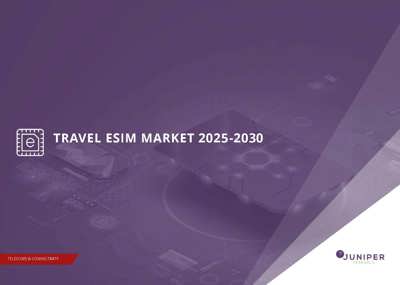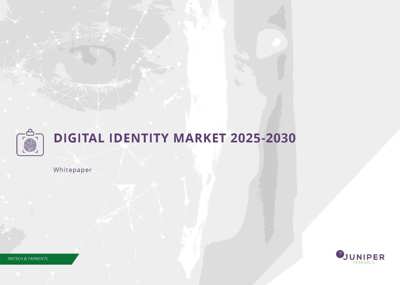Stripe Expands Pay by Bank to France & Germany – But Can It Dethrone the Card?
Stripe, a global provider of payments software to businesses, has expanded its offering of account-to-account (A2A) payments to Germany and France through a continued partnership with TrueLayer, an Open Banking platform.
Stripe’s A2A product, called Pay by Bank, uses TrueLayer’s Open Banking infrastructure which connects bank accounts across Europe; enabling merchants to accept transactions directly from a customer’s bank account. This expansion follows the success of Stripe and TrueLayer partnering to offer the same service in the UK in September 2024. There is reason for Stripe to be optimistic about this expansion, with TrueLayer already processing €2 billion ($2.4 billion) of Pay by Bank transactions in France and €1.4 billion ($1.6 billion) in Germany.
Advantages of Pay by Bank
There are several advantages for merchants accepting payments by Pay by Bank over traditional payment methods.
One of the primary advantages is the lower transaction fees, especially when compared to card networks. The cost of card transaction fees is significant to businesses, as it is the most common form of consumer payments in the markets in which Stripe has so far launched Pay by Bank.
Another important advantage for merchants is the lack of chargebacks on Pay by Bank.
Chargebacks, both legitimate and fraudulent, represent a significant cost for many merchants. The large increase in fraudulent chargebacks in recent years has only increased the burden. Even when a fraudulent claim is beaten by a merchant, it takes time. This is a time when the merchant does not have access to the payments; interrupting cashflow which can push businesses to rely on financing, further increasing costs. Chargebacks also require a merchant to allocate resources to fight the chargeback, whether that is staff spending time putting together evidence, or the merchant spending money on a chargeback management platform to undertake this task.
Another benefit of Pay by Bank is its increased security. In the markets Stripe is targeting, there are clear Open Banking regulations, as well as the requirement for strong customer authentication from the Second Payment Services Directive (PSD2). These, together with the fact banks employ their own strong anti-fraud systems, mean that Pay by Bank is relatively resistant to fraud.
These advantages are more attractive to small and medium-sized enterprises (SMEs), as these costs represent a larger proportion of costs for merchants of this size, compared to large enterprises and multinationals who are more able to absorb the additional costs. As Stripe’s primary customer base are SMEs, this makes Pay by Bank a particularly valuable addition to its payments acceptance offering.
Another advantage for merchants is customer satisfaction, given the convenience that Pay by Bank provides. To pay using Pay by Bank online, the consumer simply has to select the Pay by Bank option at checkout and then verify their identity. This is quicker than manually entering payment card details and can be more secure as it can be verified using biometric verification. Likewise, refunded monies can be back in the customer’s bank account within seconds, minimising a too-often significant cause of frustration for consumers.
Juniper Research expects that these advantages will drive an 80% growth in the number of online A2A payments users between 2025 and 2029.
Total Global Online A2A Payment Users (m), 2025 vs. 2029

Source: Juniper Research
Challenges of Pay by Bank
Despite these advantages, Pay by Bank is not without its challenges.
The most significant challenge is consumer attitude. Many consumers are simply not aware of Pay by Bank as a payments option. Those who are aware of it may not fully understand what exactly it is or understand the advantages it offers over traditional payment methods. This compounds with consumers’ existing preference for card payments. Consumers are familiar with cards and trust them to be secure. There is also consumer protection in place, in markets such as the UK; ensuring that consumers get their money back if they are a victim of fraud that was not their fault. This makes any security advantages of Pay by Bank less of a concern for consumers.
Another disadvantage of Pay by Bank, compared to credit cards, is its inability to extend lines of credit or offer rewards for its use. This means those who use credit cards are very unlikely to give up these benefits for the additional convenience of using Pay by Bank.
A limitation of the payment method is its reliance on Open Banking regulation to enable it, without needing to partner with the consumer’s bank. Without Open Banking, the process of enabling Pay by Bank is significantly complicated, and banks’ unwillingness to partner to allow this can significantly restrict coverage. This means Pay by Bank is unlikely to gain much traction in any market that does not have Open Banking regulations to support this payment method.
Another challenge is facilitating cross-border transactions using Pay by Bank. Due to Pay by Bank’s reliance on regulations facilitating the payment method, there are markets, such as the US, where merchants are less likely to accept it. Equally, for merchants that have many international customers, a proportion of these customers will not have Pay by Bank supported in their country. This contrasts with the major card networks, where merchants will have customers in nearly every market and facilitate cross-border transactions between them regularly. This is not an issue within the EU, as all countries have the same Open Banking regulation, as do other countries which have signed up for regulatory alignment.
Pay by Bank is gaining traction in markets where the regulatory framework is in place. Partnerships, such as the one between Stripe and TrueLayer, will further boost this payment method, with it becoming easier for merchants to accept these payments. Juniper Research expects that Pay by Bank will continue to grow over the coming years, especially if Pay by Bank providers focus on raising awareness among consumers. However, it will be quite some time before it becomes a true competitor to the major card networks.
As a Senior Research Analyst, Michael delivers in-depth insights into the fast-evolving worlds of digital identity and payments. His recent work spans critical topics such as Digital Wallets, Digital Identity, and Instant Payments; helping industry leaders navigate change and identify new opportunities.
Latest research, whitepapers & press releases
-
 ReportNovember 2025Telecoms & Connectivity
ReportNovember 2025Telecoms & ConnectivityeSIMs & iSIMs Market: 2025-2030
Juniper Research’s eSIMs and iSIMs research suite offers insightful analysis of a market set to experience significant growth in the next five years. The research suite provides mobile network operators (MNOs), original equipment manufacturers (OEMs), and eSIM management and platforms vendors with intelligence on how to capitalise on the market growth, and guidance on how eSIM-only devices and sensors, SGP.42, in-factory provisioning, and iSIMs will change the competitive landscape.
VIEW -
 ReportNovember 2025Fintech & Payments
ReportNovember 2025Fintech & PaymentsModern Card Issuing Platforms Market: 2025-2030
Our Modern Card Issuing Platforms Market research suite provides a detailed and insightful analysis of this evolving market; enabling stakeholders from banks, financial institutions, fintech companies, and technology vendors to understand future growth, key trends, and the competitive environment.
VIEW -
 ReportNovember 2025Fintech & Payments
ReportNovember 2025Fintech & PaymentsDigital Wallets Market: 2025-2030
Our digital wallets research suite provides detailed analysis of this rapidly changing market; allowing digital wallet providers to gain an understanding of key payment trends and challenges, potential growth opportunities, and the competitive environment.
VIEW -
 ReportOctober 2025Fintech & Payments
ReportOctober 2025Fintech & PaymentsDigital Identity Market: 2025-2030
Juniper Research’s Digital Identity research suite provides a comprehensive and insightful analysis of this market; enabling stakeholders, including digital identity platform providers, digital identity verification providers, government agencies, banks, and many others, to understand future growth, key trends, and the competitive environment.
VIEW -
 ReportOctober 2025Telecoms & Connectivity
ReportOctober 2025Telecoms & ConnectivityTravel eSIM Market: 2025-2030
Our comprehensive Travel eSIMs research suite comprises detailed assessment of a market undergoing rapid growth. It provides insight into how travel eSIM providers can differentiate their services to maximise success in the market over the next two years.
VIEW -
 ReportOctober 2025IoT & Emerging Technology
ReportOctober 2025IoT & Emerging TechnologyDirect to Satellite Market: 2025-2030
Juniper Research’s Direct to Satellite research suite provides satellite providers, investors, and partners, such as Mobile Network Operators, with an extensive analysis and insights into the direct to satellite market.
VIEW
-
 WhitepaperNovember 2025Telecoms & Connectivity
WhitepaperNovember 2025Telecoms & ConnectivityeSIM-only Devices: The Impact on Operators, Consumers, and IoT
Our complimentary whitepaper, eSIM-only Devices: The Impact on Operators, Consumers, and IoT, explores the challenges and opportunities for the three segments, with a particular focus on eSIM-only smartphones and SGP.42.
VIEW -
 WhitepaperNovember 2025Fintech & Payments
WhitepaperNovember 2025Fintech & PaymentsUnlocking the Next Stage of Growth for Modern Card Issuing Platforms
This free whitepaper analyses key trends shaping the modern card issuing space, and the ways in which modern card issuing platforms can capture growth.
VIEW -
 WhitepaperNovember 2025Fintech & Payments
WhitepaperNovember 2025Fintech & PaymentsTop 10 Fintech & Payments Trends 2026
Fintech is evolving fast. From stablecoins to agentic AI, our annual guide reveals the shifts redefining payments, digital identity, and the future of money in 2026. Download your copy today.
VIEW -
 WhitepaperNovember 2025Fintech & Payments
WhitepaperNovember 2025Fintech & PaymentsDigital Wallets: Empowering Financial Inclusivity
Our complimentary whitepaper, Digital Wallets: Empowering Financial Inclusivity, examines the state of the digital wallets market; considering the impact of digital wallets on different geographies, how they are shaping the modern payments landscape through lower transaction fees and promoting financial inclusivity for underbanked populations, and how they are competing with established payment methods.
VIEW -
 WhitepaperNovember 2025Telecoms & Connectivity
WhitepaperNovember 2025Telecoms & ConnectivityTop 10 Telecoms & Connectivity Trends 2026
The next phase of telecoms isn’t coming — it’s already here. From AI agents to new network models, our guide shows what’s changing right now and how it’s transforming the business of connectivity. Download your copy today.
VIEW -
 WhitepaperOctober 2025Fintech & Payments
WhitepaperOctober 2025Fintech & PaymentsHow Digital Identity is Going Mainstream
Our complimentary whitepaper, How Digital Identity is Going Mainstream, assesses the trends that are moving digital identity to be increasingly popular, and challenges to digital identity growth.
VIEW
-
Fintech & Payments
AML Adoption to Hit 3.8 Million Businesses Globally by 2030, With Europe at the Forefront
November 2025 -
Telecoms & Connectivity
eSIM Connections to Grow 300% Globally in Next 5 Years, as China Presents Instant Opportunities
November 2025 -
Fintech & Payments
Cross-border A2A Transactions to Surpass 11 Billion in 2026 Globally, Thanks to Enhanced Interoperability
November 2025 -
Fintech & Payments
Modern Card Issuing Platforms Market to Surpass $4.2 Billion by 2030, as Juniper Research Reveals Global Leaders Driving Fintech Innovation
November 2025 -
Fintech & Payments
Juniper Research Unveils the Top 10 Trends Set to Shape Fintech & Payments in 2026
November 2025 -
Fintech & Payments
Digital Wallet Users to Surpass Three Quarters of Global Population by 2030
November 2025
























